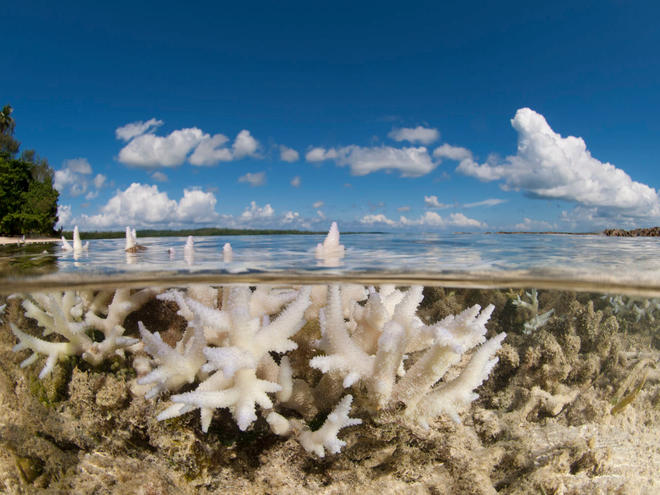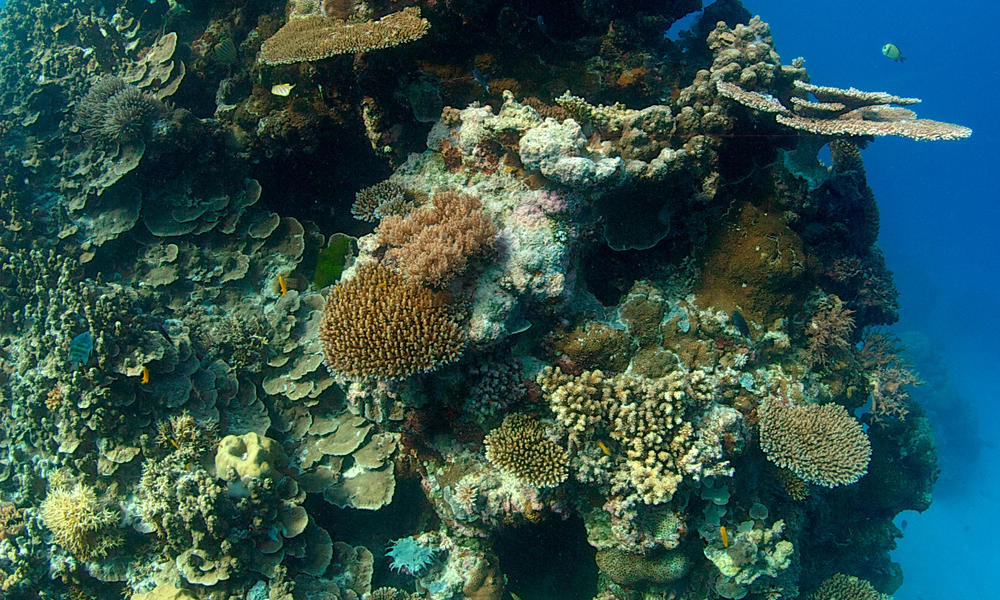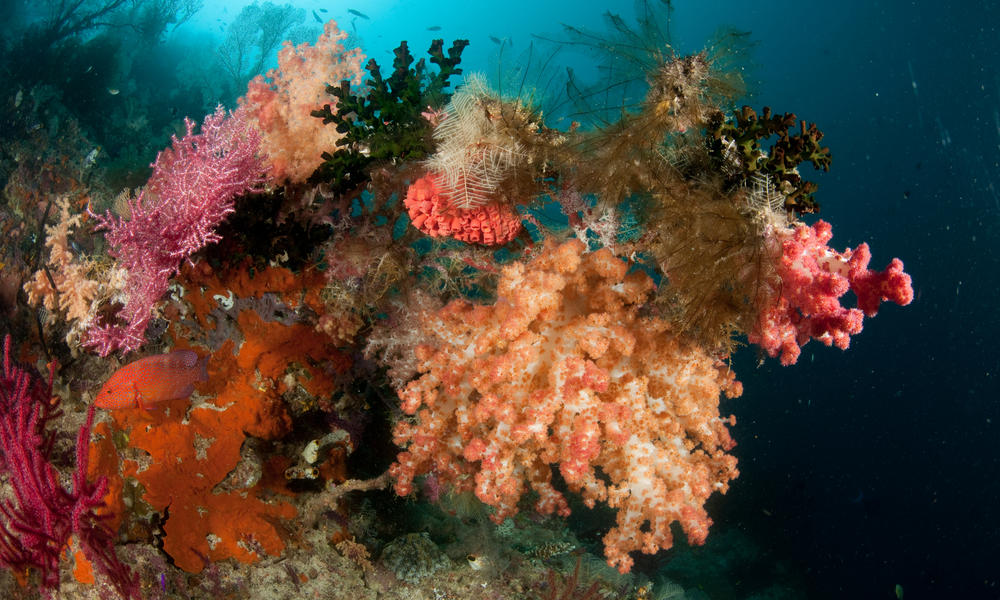For the first time, researchers have created models to predict when, where, and to what extent coral bleaching will occur in reefs around the world at a finer scale than ever before. Because many countries depend on their reefs for food, tourism, and costal protection, knowing when and where bleaching will occur could help government officials, natural resource managers, and conservationists make informed decisions on how and where to prioritize conservation work.

Coral reefs are especially vulnerable to climate change impacts because they are easily stressed by changes in water temperature. Bleaching occurs when above-average sea temperatures or other stressors disrupt coral’s mutualistic relationship with the algae, called zooxanthellae, that lives within its tissue. When stressed, the algae leaves the coral, causing it to turn white and leaving it much more vulnerable to disease and death.
The study, entitled “Local-scale projections of coral reef futures and implications of the Paris Agreement,” published in Nature Scientific Reports, predicts that all coral reefs will experience annual bleaching by the end of this century, but tells us which reefs are likely to bleach sooner. Scientists from multiple organizations and universities analyzed data on where heat-trapping gases are most concentrated to figure out where warmer sea surface temperatures would most likely occur and have the greatest effects on reefs in the near future. This can help coral reef managers plan for the future.
 © Jerker Tamelander
© Jerker Tamelander © Jürgen Freund / WWF
© Jürgen Freund / WWFThe models created in the study account for two emissions scenarios: assuming pledges 196 nations made in a landmark global plan to curb climate change take place, and assuming nations do not follow through on the agreements. Even if everyone follows through on their commitments to limit global warming to well below 2 degrees Celsius, coral reefs are still on the decline and expected to experience severe loss in the coming decades. But this loss will be comparatively slower and allow more time for people to develop and implement potential solutions to the problem.
“We are going to need to be much more innovative and proactive if we want to see coral reefs thrive into the next century,” said WWF lead marine scientist and study co-author Dr. Gabby Ahmadia. “Conventional conservation is not going to cut it against the impacts of climate change. We need to embrace the new climate reality to guide efforts to save our oceans”.
Corals can sometimes recover, depending on the severity of the bleaching, but they don’t always. Just this last year, more than 90% of coral on the Northern Great Barrier Reef in Australia was affected by bleaching, and more than 20% of it died as a result.
We need to act now to protect coral reefs around the world.
Support for the study, entitled “Local-scale projections of coral reef futures and implications of the Paris Agreement,” was provided by UN Environment, WWF, NOAA’s Coral Reef Conservation Programme, the Atlantic Oceanographic and Meteorological Laboratory and the National Marine Fisheries Service via the PIFSC, USGS via the Pacific Islands Climate Science Center, Total Foundation, and US National Fish and Wildlife Foundation.
Enviroshop is maintained by dedicated NetSys Interactive Inc. owners & employees who generously contribute their time to maintenance & editing, web design, custom programming, & website hosting for Enviroshop.
